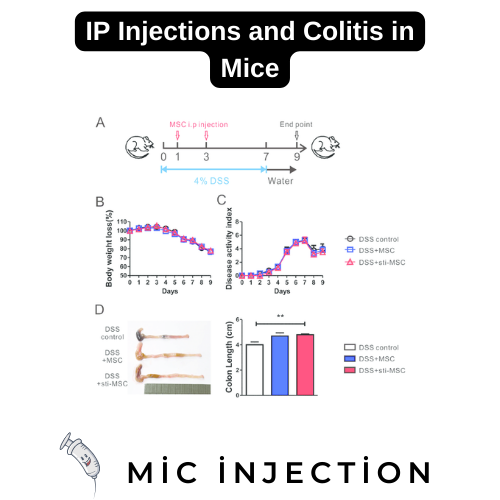The pharmacokinetics of marijuana in mice were studied by ip injection. In the study, mice were injected with THC into the peritoneal cavity. These mice displayed impaired cognitive and psychomotor abilities. In addition, these mice were prone to developing colitis. The authors also found that the AAV9 vector distributed more effectively to internal organs when administered ip.

ip injections cause impairment of cognitive and psychomotor abilities
A recent study examining ip injections for sodium pentobarbital euthanasia in mice has found that the intraperitoneal route is not as efficient as the intravenous route. Researchers examined welfare implications and concluded that IP was not the best route for euthanasia.
The early results of the study provide a solid foundation for further investigation of the effects of intraperitoneal injections. Future studies will focus on how these drugs are delivered to mice.
ip injections cause THC to be absorbed in the peritoneal cavity
IP injections, or intraperitoneal injections, are performed in the abdomen using a short, sterile needle. This is to prevent puncturing the cecum and intestines. After restraining the hamster, the needle is inserted at an angle of about 60 degrees to the body wall. Once in place, the plunger is removed to ensure that the needle is not in the viscera or blood vessels. A full IP injection will take about 12 grams of THC.
IP injections are often used to study the effects of drugs on the peritoneal cavity. They allow quick observation of drug effects and allow for the study of multiple organs within the peritoneal cavity. In addition, IP injections are much less painful for the animal.
ip injections induced colitis
In the present study, we examined the effect of ip injections on the development of chronic idiopathic colitis in mice. We used a female mouse strain lacking both B and T cells. Injecting naive T cells into these mice induced colitis and ulcerative colitis.
CRF, a CRF-R1 agonist, increased the infiltration of macrophages into the colon of DSS-treated mice, whereas CP154526 decreased their infiltration. However, neither CP154526 nor CRF injections significantly increased the expression of CRF-R1 mRNA or protein. The latter had a positive effect on inflammatory markers such as C-reactive protein.
ip injection mice showed higher distribution rates of AAV9 vector into internal organs
Using a mouse model, researchers examined the distribution of AAV9 vector into various internal organs by ip injection. The study involved comparing AAV9-infused mice with control mice. The mice that received ip injections had higher AAV9 distribution rates than control mice. Furthermore, ip injection mice displayed a higher frequency of distribution into the liver and heart than control mice.
AAV9 vectors have high transgene expression levels and are suitable for transduction in human and animal models of cardiovascular and musculoskeletal diseases. They have also been shown to efficiently transduce neurons and skeletal muscle in neonates.
ip injection mice showed highest number of GFP+ cells co-localized with NeuN+ cells
The transgenic mice used in this study were produced by breeding M mice and R mice. IPTG was used to induce the expression of MGF transgene. IPTG was diluted to a concentration of 10 mM in drinking water and administered to the MR mice at three different times: at E15, three months, and twelve months of age. The mice were then maintained in the laboratory until they were 24 months old, and behavioral and BrdU incorporation assays were performed.
Transfected cells in both the anterior and dorsal horns of the spinal cord showed a high degree of GFP expression. The GFP-related fluorescent signal increased with time in the interscapular region of both groups. Moreover, mice given IP injections showed higher expression in the liver and inguinal areas than mice given i.c.v. injections. These findings were validated by immunofluorescence analysis.
ip injection mice showed highest survival rate
The IP group survived better than the other two groups, exhibiting a higher survival rate. This was attributed to a reduced weight loss and a quick weight gain. The biggest group difference occurred on day three. In addition, the IP group showed no occult blood in their feces.
Busulfan is a neurotoxin that affects cells and tissues. It also has a high rate of toxicity in the kidneys and liver. The injection of Busulfan reduced the spermatogenesis process by reducing the amount of spermatozoa in the lumen.